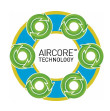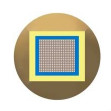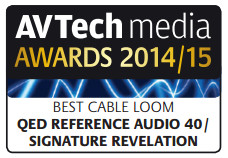QED Signature Revelation Speaker Cable
Founded by Bob Abraham and Ian Vine in 1973; QED has, over the past 40 years, acquired unparalleled knowledge and experience of hi-fi and home cinema cables and connectivity.
We are the market leader but we’re certainly not complacent. Our design engineers constantly investigate new technologies and undertake scientific research to ensure we always offer our customers the very best products on the market. As far back as 1994 we conducted the most extensive ever scientific investigation into the effects of speaker cables on hi-fi system performance. The results were astonishing, and can be found on our website under the heading ‘The Genesis Report'. The report produced clear evidence that speaker cables do matter, and we continue to use this information today. We urge you to try QED cables for yourself. If you do you’ll discover the differences in sound quality that QED hi-fi cables can really make.
Key Technologies Overview

Silver Plated 99.999% Oxygen Free Copper
Speaker cables must exhibit the lowest possible resistance to the flow of electrical current. The larger the cross- sectional area of the conductors the smaller the resistance will be. However the cable must be small enough to be practical for its intended use. Although copper is a very good electrical conductor, silver is even better. By using it in our top of the range cables we can improve conductance without making the cable larger. As the pitch of the sound increases the current flows more and more to the outside of the conductors so we cunningly use silver plated 99.999% oxygen free copper conductors to reduce resistance only where it is needed, thus saving you money.

Low Loss Dielectric
Music signals in a loudspeaker cable move back and forth many times every second. The insulating material used to separate the send and return conductors from each other (the dielectric) has to be charged and discharged every time. Not all of the energy stored in the dielectric during each charge cycle is completely returned during each discharge cycle which has a detrimental effect on the fidelity of the sound you hear. That's why at QED we use low loss dielectric materials such as Polyethylene (PE) or Teflon(TM) (PTFE) in preference to cheaper PVC alternatives found in inferior unbranded cables.

X-Tube Technology
In loudspeaker cables high pitched sounds are forced to travel towards the outside of the conductor and so are able to use less and less of the available cross-sectional area as the pitch increases. This is called the "Skin Effect". It means that for high frequencies the resistance of the cable appears to be much higher than it does for lower pitched sounds. This has a detrimental effect on the fidelity of the sound you hear. QED X-Tube Technology solves this problem by creating a hollow tubular conductor geometry through which each frequency can pass with equal ease when compared to traditional solid or stranded conductors.

Air Core Technology
In loudspeaker cables electrical current does not flow smoothly because - rather like in a river - small eddy currents are formed. Eddy currents in one conductor can affect the current flowing in an adjacent conductor so that currents flowing in the same direction move away from each other. This "Proximity Effect" increases resistance as frequency increases which has a detrimental effect on the fidelity of the sound you hear. QED Aircore Technology builds on the science of X-Tube Technology and eliminates this problem by using individually insulated twisted strands arranged around a hollow core to solve both the proximity and skin effects.

Airloc Technology
If a bare wire termination method is used the exposed copper quickly oxidizes increasing the resistance of the cable, which has a detrimental effect on the fidelity of the sound you hear. Available as an option, QED Airloc plugs eliminate this problem by preventing oxidization and providing a gold plated mating surface which remains low resistance for ever.
Description
QED Signature Revelation Speaker Cable
The award winning Signature Revelation is the little brother to the 'Genesis Silver Spiral'
'Revelation' speaker cable lives up to its name and delivers unprecedented sonic performance at a price comfortably affordable by all Hi-Fi and home cinema enthusiasts. This cable is a miniaturized version of our 'Genesis' cable and features Teflon dielectrics to maintain its low impedance.
AWARDS AND REVIEWS





FEATURES AND BENEFITS
Aircore™ Technology
Ten silver plated 99.999% oxygen free copper central conductors of 19/0.1 mm
Features Teflon dielectrics to maintain its low impedance
Like most interconnects here, the Revelation is a silver-plated copper affair, arranged in a special complementary way - the two conductors have different diameters, and this is said to give an alternative path for high-frequency audio signals to avoid time smear. The foamed polyethylene dielectric is claimed to reduce the amount of signal lost to cable capacitance. QED's Analoc plugs are fitted, said to be a low eddy current design with copper instead of brass used. They feature an outer locking cylinder that needs to be screwed forward before the plug's 'blades' can be locked onto the RCA phono socket, then the locking cylinder needs to tightened backup for a (very) secure fit. The Signature Revelation speaker cable uses 10 silver-plated oxygen- free copper central conductors, which are claimed to provide very low resistance alongside high levels of detail. These cores are separately insulated and arranged around a hollow core of polyethylene; QED calls this its Aircore technology and it's claimed to reduce inductance.
Sound Quality
Before the QED loom, the panelists have taken a mixed view of the various wires played to them. They've found positives and negatives, liked some and been lukewarm about others. But two out of the three listeners express a strong preference for this set of cables, applauding it for its clean, open, even sound that doesn't try to do anything too clever. Instead it is very accomplished at almost every facet of the music, and makes things look rather easy.
"Everything is joined up," says one panelist, and so it proves. The Lorde track plays better than it has through most others here. Although not necessarily the warmest or most expansive, it just seems to gel the bass with the rest of the music - which is something several others fail to do.It doesn't sound too steely in the midband, giving a nice smooth sound to female vocals, and treble is crisp and finessed. Musically the loom works very well, the beat bouncing along in an enjoyable way. The result is a surprisingly easy listen, when previously the track hasn't quite made sense.The REM tune is described as sounding, "head and shoulders better" by one panelist. There is a fine sense of depth to what can sound a pretty close and claustrophobic mix. One can hear lots of detail too, with the keyboard backing track coming through from the second verse, where previously it had been submerged. Tonally the QED isn't the warmest or most sumptuous here, but it is very even and transparent and doesn't seem to be trying to add or subtract anything much. This means that it's likely to work well with a wide range of systems. Moving to the Duke Ellington piece and the pattern continues. One adoring panelist describes it as, "good bass rhythm and control, nice, cohesive, great sound, head and shoulders better".Another of the panelists isn't quite so enamored; they appear to yearn for the expansive yet sumptuous midband of the Ecosse, and find the QED a little too anodyne and bland when playing Julian Lloyd Webber's cello work. All of which just goes to show how much taste plays a part, but still this remains a superb result considering its low price.
CABLES MATTER
This cable offers exceptional performance for its price through its use of carefully calculated X-Tube™ and Genesis Silver Spiral geometries which have the combined effect of reducing the overall impedance of the cable below that which would be expected of a traditional speaker cable of the same cross-sectional area.
Aircore Technology™ is completely effective in reducing the self-inductance of the cable to around half that expected of parallel conductors by calculation. Because of this conductor spacing can be increased to reduce capacitance without the extra inductance generated by this change causing audible problems in the cable performance.
Through the use of superior dielectric materials such as polyethylene and for the first time in a QED cable, clear Teflon insulation, the dissipation factor is kept extremely low - something that is the hallmark of a good sounding speaker cable.
Specifications
















